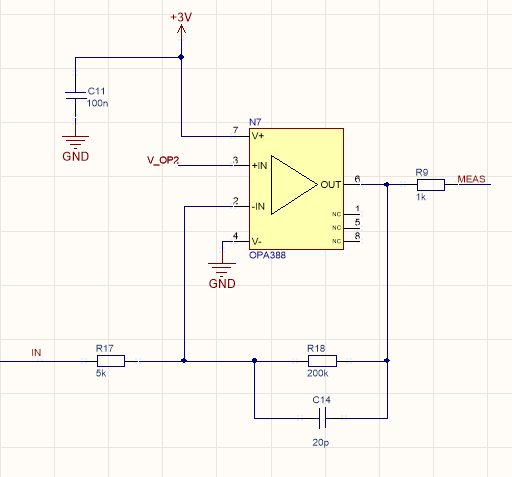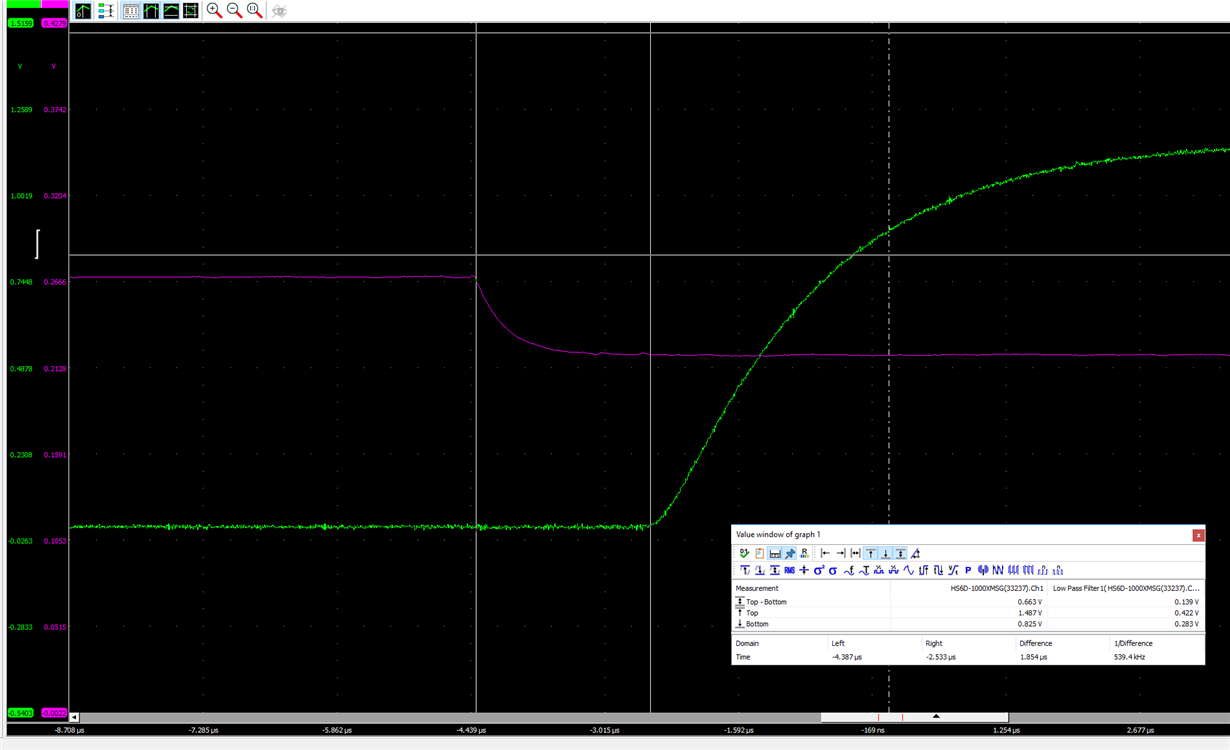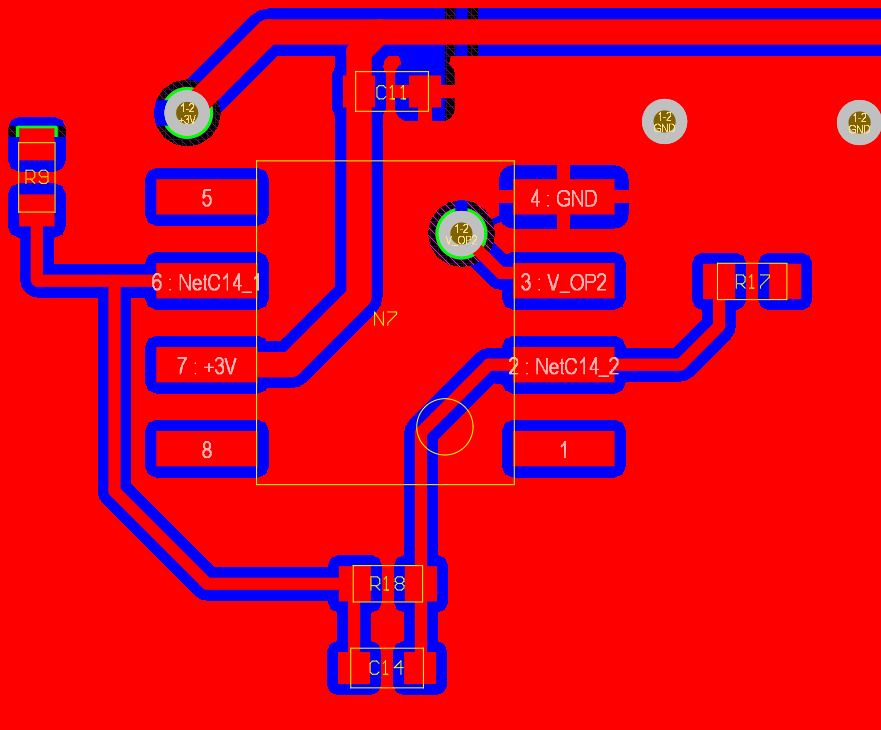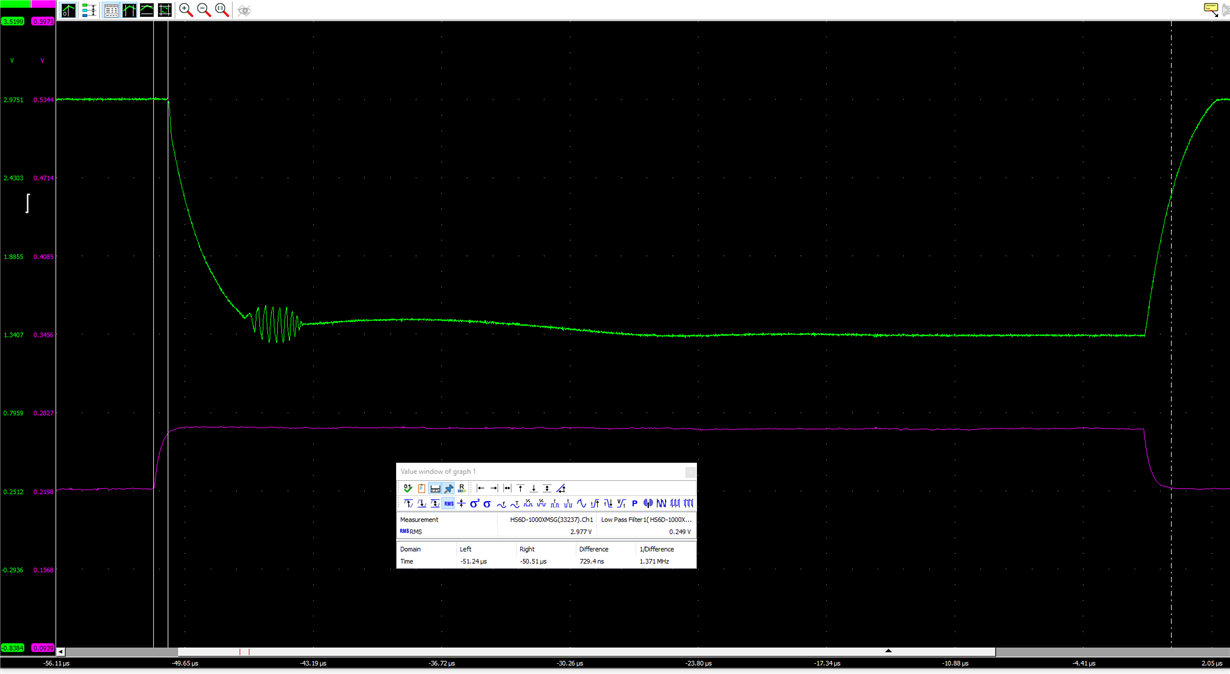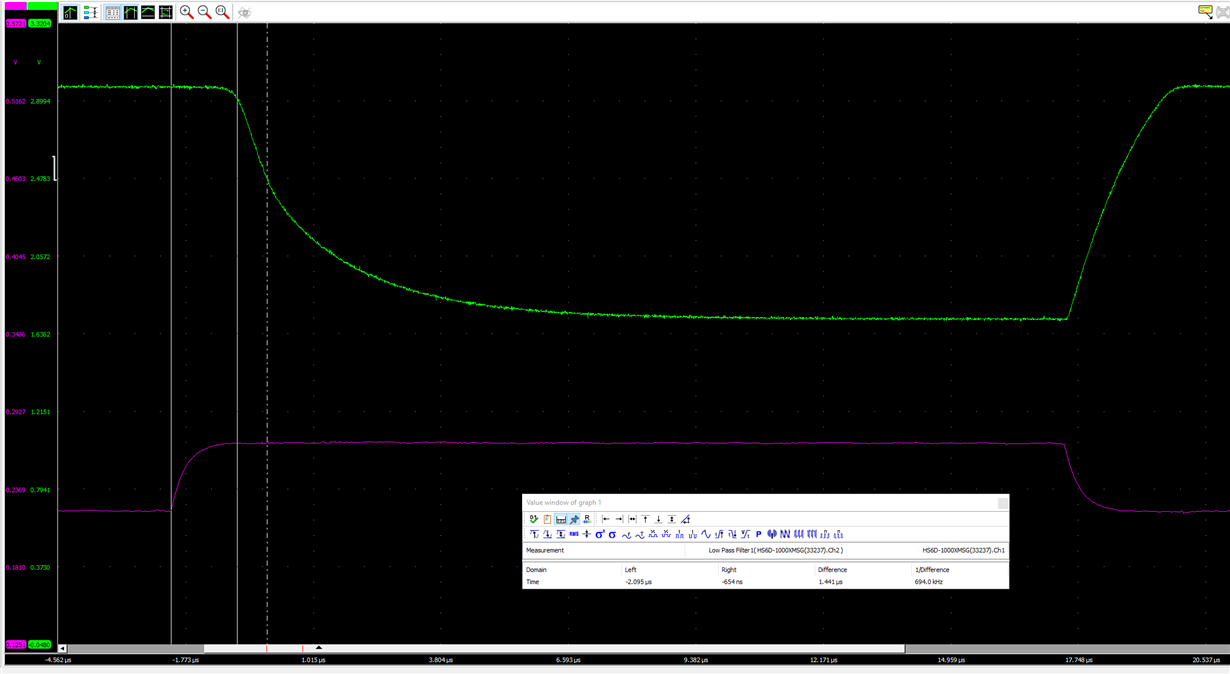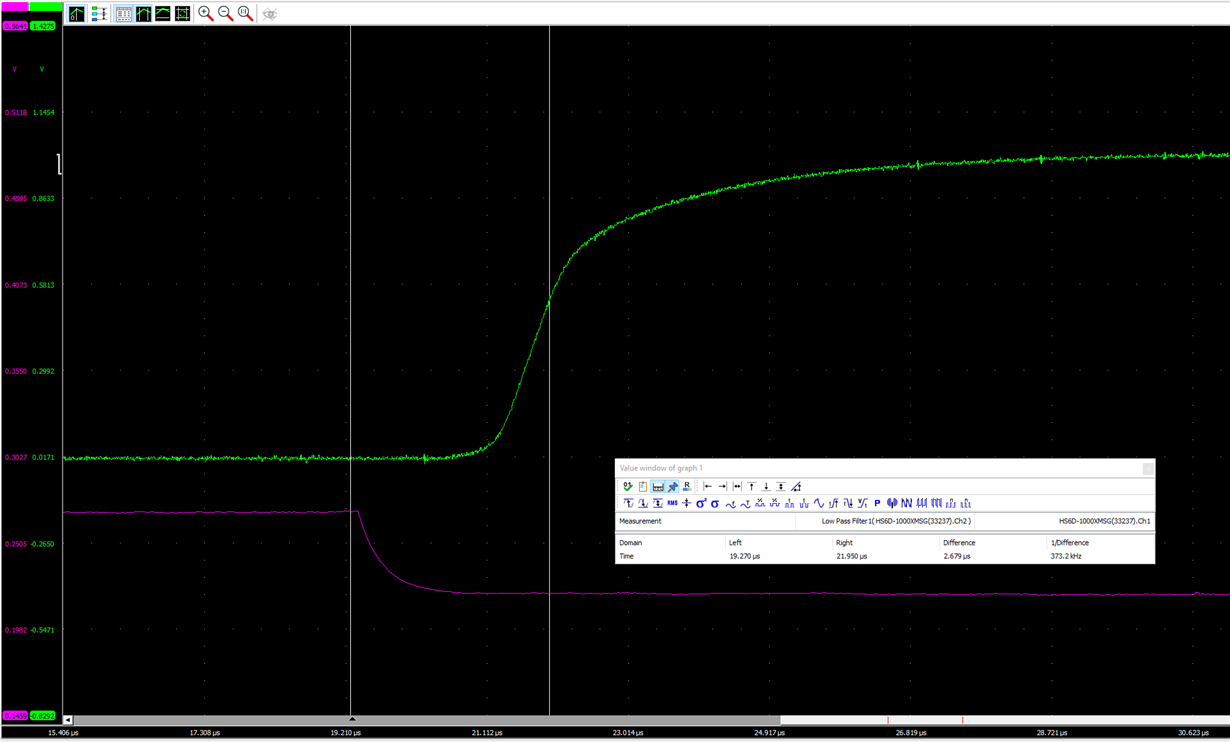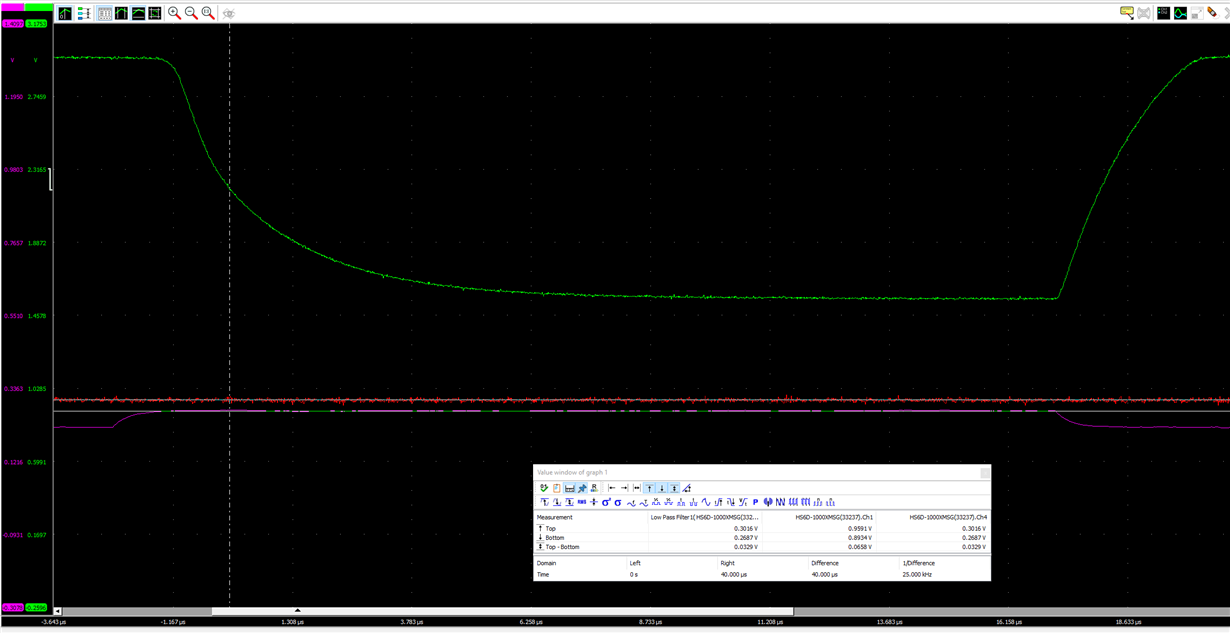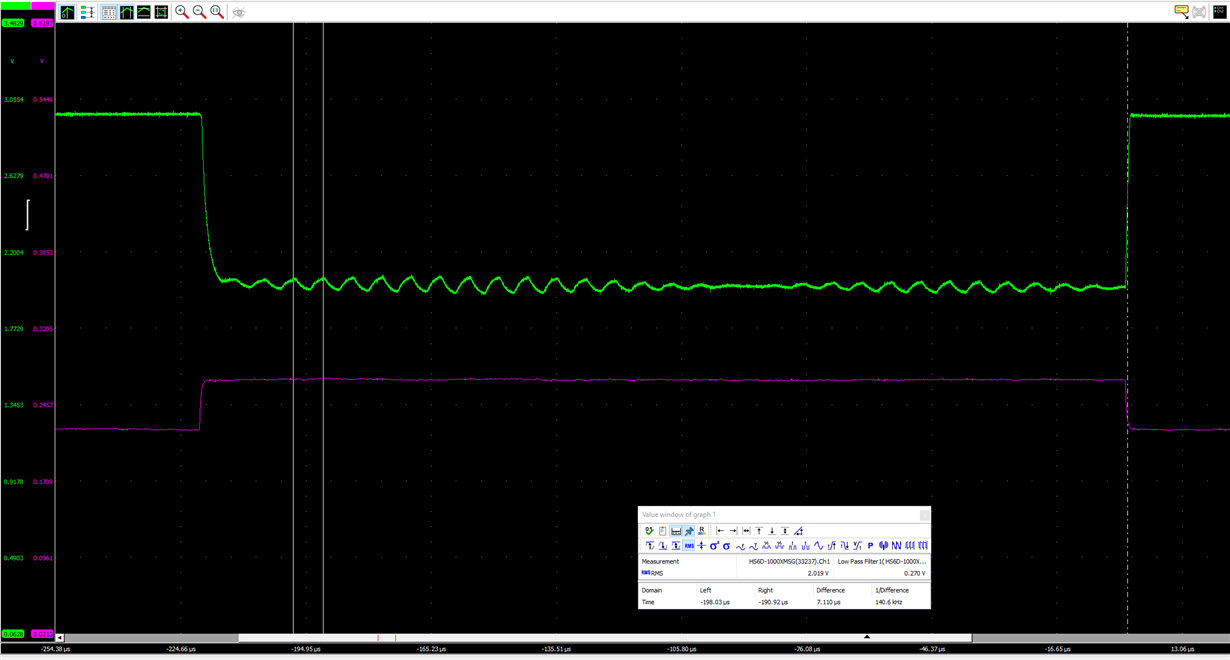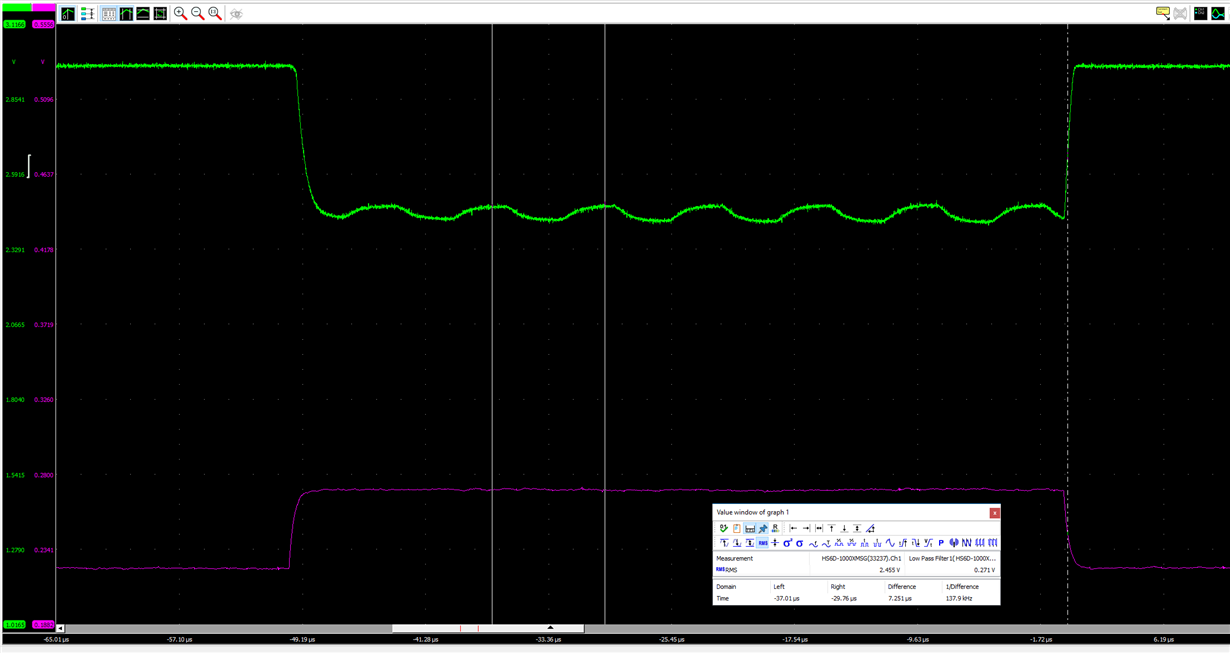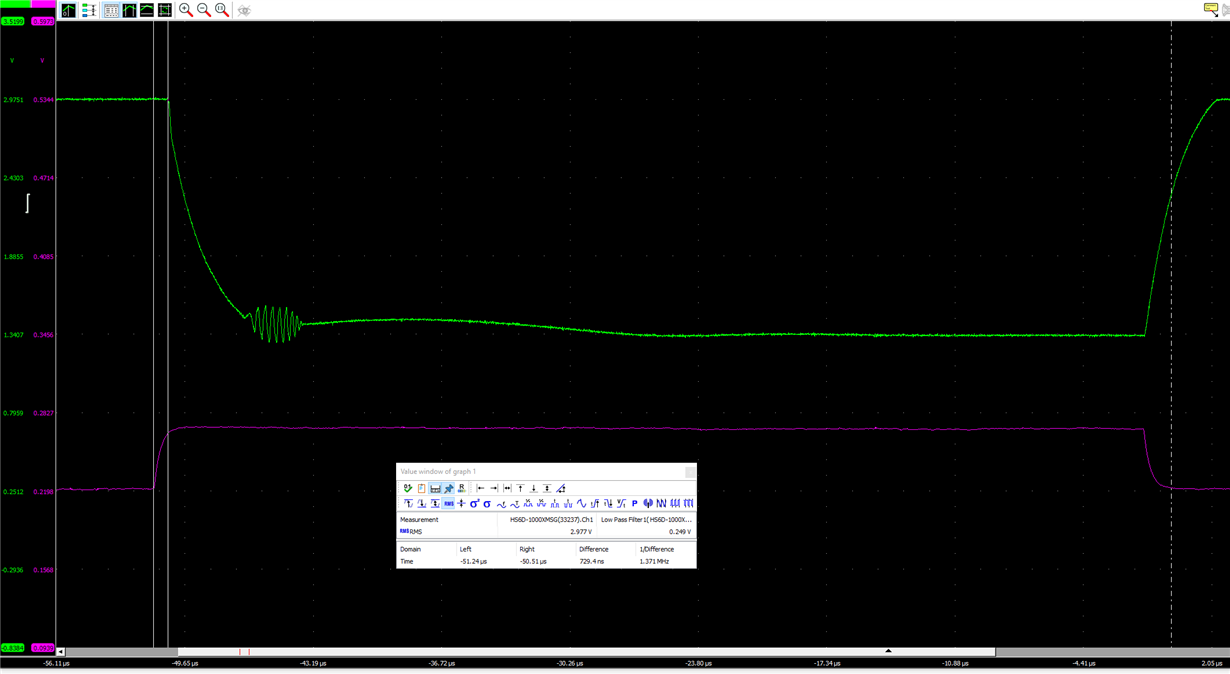Other Parts Discussed in Thread: OPA340
Hello,
OPA388 behaviour measured with following. IN+ is connected to adjustable voltage to set output voltage level.
Settling is correct when output voltage starts from linear region ie. output is below 3V (+margin). Green is output and violet is IN.
Weird behaviour starts when output voltage is adjusted to start from 3V.
And behavior seems to be different when adjusting pulse time and output voltage DC level.
There seems to be ~140kHz oscillation in large step signal response. Could you explain why this is happening? And how oscillation behaviour could be prevented?


